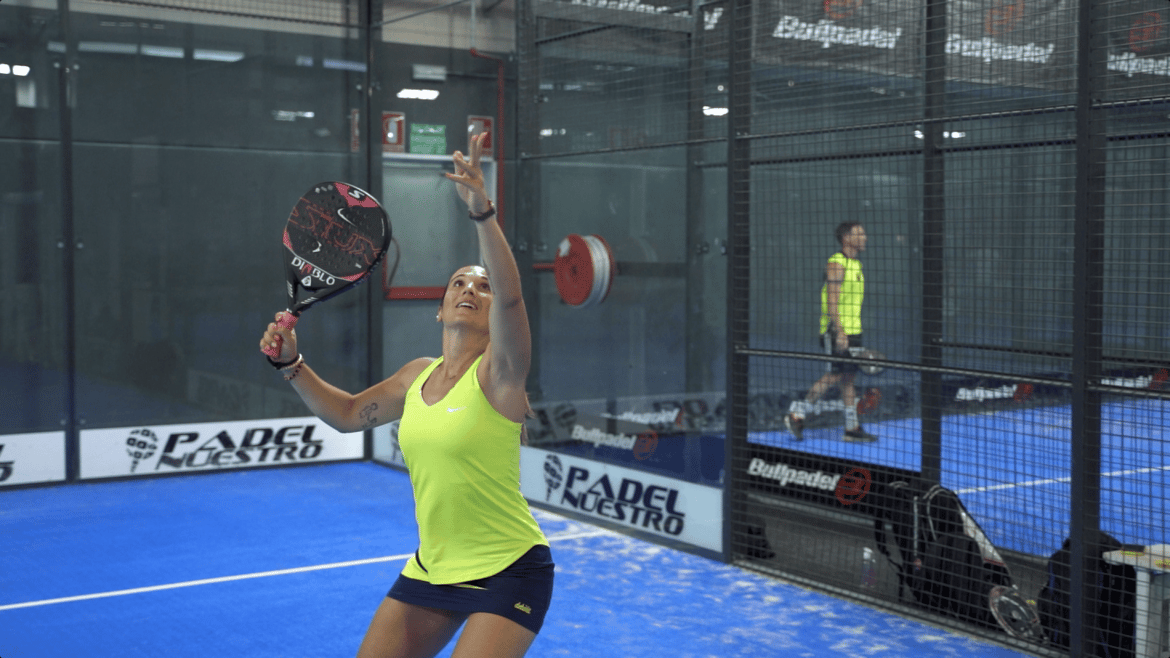Practical tips
The famous smash
The smash is one of the most attractive shots that exist in this sport. It is a smash that most of us like to make on the court, it leaves a good feeling after executing it well and often serves to finish the point.
If it is not the favorite smash par excellence, it can be one of the most sought after by amateur players and also by many professional players.
“A good smash allows you to finish a point quickly and with tenacity in many occasions”.
It is a powerful, often aggressive stroke that threatens to win the point to opponents and is considered one of the most decisive within the range of strokes of a paddle player.
Who wouldn’t want to improve their smash?
We would all like to improve our level of paddle and this happens to polish not only the blows but countless nuances that hides behind each stroke. In addition to this there is the tactic that determines the effectiveness of the same, in addition to the psycho-physical component that always tips the balance to one side or the other.
Many of you would like to finish off better in terms of power, speed, technique or even within a strategy. Let’s take a look at some of the important points for better finishing.
“Before recommending some of the most decisive aspects for a good smash, let me remind you that not relying on these aspects can lead to a high risk of injury, given the explosive nature of this power gesture that is executed at high speeds repeatedly during a match, a week, and by extension from a more general perspective, during the season.”
Important points for better finishing
Here are a few key points that will improve your finishing if you try to apply them when you play and manage to execute them correctly.
TECHNIQUE
Hit in the sweet spot of the racket
The paddle is not equally effective in all “its face”.
It is very important that you know how to detect when you have hit the sweet spot or, on the contrary, you are hitting at the expense of your outside without taking advantage of the most effective part of the racket to project the ball with more power.
There are times when the racket may even break or crack slightly at the edges. Beyond a possible manufacturing defect, it is very possible that the location of the breakage indicates that the racket is suffering because of inaccurate shots, where you apply maximum power, but it is not transferred in its fullness to the ball.
Choose the most appropriate type of spin (topspin or flat) according to the context of the game.
There are different types of topspin and all of them can be useful within a specific game context. These are:
● Fast flat smash: to surprise the opponent located at the back of the court.
● High flat smash: to bring the ball into your court or to entangle the ball in the fence or to take it out for 3 (x3).
● Parallel lift shot: to bring the ball to your court describing a high parabola to avoid the opponent’s return or to get around the side wall and fence and serve it for 3 (x3).
● Backhand x4: to describe an upper parabola to the back of the court and take it out of the court.
“Depending on the context of the game you may be interested in one or the other shot, it is important that you not only shoot well, but that you choose the one that is going to be most effective within the situation of the point and your opponents.”
Gaining confidence in the stroke and making the right decision will help you improve the feeling of that day in the match and will allow you to have a better disposition to shoot better.
TACTICS
Choose the right direction
It is not only the type of shot that is important but also the direction of the shot.
One direction or another can completely alter the outcome and allow or not allow the opponent to return. If the smash is performed and does not give the expected possible result, the confidence in this shot decreases.
The directions of the smash can be:
- Parallel fast flat smash.
- Fast flat cross-court smash.
- High parallel flat backswing.
- High flat cross over.
- Parallel lift smash.
- Cross over topspin.
“Each direction and type of shot will generate some opportunities, open some spaces and force your opponent to hit from one area of the court.”
It is important to make tactical sense initially before relying on correct execution.
Don’t overload
Play each ball with sense and also make use of the tray, the viper and the curl to the fence.
These are variations of the aerial shots that, in addition to offering you different resources depending on the type of ball, will help you to compromise your opponent in different ways and will encourage the load of these shots to be distributed in a different and more tolerable way.
On the other hand, if you identify most of the aerial shots as appropriate for finishing, you may over-strike and that can lead to serious overloads that can translate into typical injuries such as shoulder slap, rotator cuff involvement or elbow problems.
STRENGTH
Use your strength efficiently
In order to finish well one must have a minimum of strength, but it is not necessary to have a maximum strength higher than the average player. What is really important is that you use that strength well, that you apply it well.
Use your strength applied correctly, if you are interested in this term, you can access one of our previous articles to deepen on this concept in: https://blog.padelmba.com/es/la-fuerza-aplicada-al-padel/
Take advantage of the strength of your legs
The legs share a series of very powerful muscles, some of them even more than your dominant arm, make use of them to transfer that strength to your paddle.
Some of the most important muscles for the backhand are your quadriceps and gluteus muscles, as they are actively involved in knee and hip extension respectively.
Take advantage of the muscle and joint chains.
You must flex and then extend both ankles, knees and hips to extend along with the momentum of your feet and transfer all that strength to your core, shoulder, arm and paddle.
“The natural order of the muscle chains in paddle is ascending, that is, the lower joints and muscles will be responsible for transferring their strength with the help of your center (core) to the limbs.
You must not forget that in addition to the hips and waist, we have a shoulder girdle in charge of stabilizing and transferring strength to the joints that are so important in the shot as the shoulders and arms.
Strengthen your shoulder
Your shoulder is the main articular link in the backswing and, by nature, also the weakest or most prone to suffer.
If you want to finish off better and not have it stress you and damage you, you must strengthen not only the joint but also the synergistic muscles that contribute to stabilize, accelerate and slow down your dominant shoulder.
Some of the most important muscles to work on for the benefit of your shoulder for paddle tennis and specifically for the smash are:
The latissimus dorsi.
The latissimus dorsi.
The subscapularis.
The pectoralis major.
The infraspinatus.
The teres minor.
The Rhomboid. Trapezius.
Serratus anterior.
Pectoralis minor.
COORDINATION
Use your body in an orderly fashion.
It is not only necessary to have useful strength (applied strength), to have a stable and strong shoulder, nor is it enough to hit the sweet spot of the paddle.
For all this to result in a well finished ball, it will be necessary to work on the coordination of all parts of our body. And this must be worked from multiple approaches, different forms and changes of speeds and types of shots.
It is very common, although fortunately less and less, to see on the courts how some students practice continuous identical shots, one after another, without varying any of these parameters. This has no teaching sense and predisposes the student to get hurt or overload himself in the near future (internal load).
It is precisely the variety of strokes and stimuli that offers the student the possibility of increasing his motor richness and coordination. To polish and improve technical gestures requires the coordination of many parts and it is more reasonable to attack them from different angles.
“It is preferable to include and rely on low and medium speeds to learn and become aware of the movement, and later or intermittently alternate them with fast, quick and powerful strokes”.
Practicing a whole basket of x3 smashes trying to express maximum power in each attempt does not make any teaching, physiological or tactical sense. It is not real and it is not the best way to help you improve and enhance your smash.
Take care of your timing with the ball
Just as the coordination of the internal aspects is important, it is equally important to take care of the coordination of the external factors.
Reading the speed, parabola and direction of the ball is essential to find the most appropriate timing with the ball. This will give us greater guarantees of executing the stroke correctly, with the right technique and at the right time.
“If we have all the features to hit a powerful shot but we do not have the timing of the ball, we will never be able to get the maximum potential of our final shots”.
I hope this article has helped you to better understand how you can improve your smash without hurting yourself in the attempt and from different approaches and perspectives.


